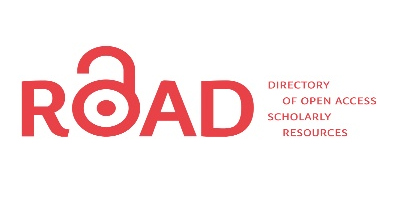ECOLOGICAL ASSESSMENT OF SOIL CONDITION OF CHERKASY REGION
DOI:
https://doi.org/10.31395/2310-0478-2021-2-91-95Keywords:
ecological assessment, heavy metals, soils, macroelementsAbstract
Agricultural lands of Ukraine are the main source of quality food. Contamination of these lands with heavy metals, pesticides and chemical residues can have fatal consequences for humanity. Soils do not have time to clean themselves from anthropogenic impact, so every year there is a decrease in yield, which will further solve the problem of food shortages.The aim of our work was to investigate the ecological condition of agricultural soils in Cherkasy region. For this purpose, the content of heavy metals (copper, zinc and lead) and macronutrients (phosphorus, nitrogen and potassium) was determined in the selected soil samples weighing 1 kg. The analysis of the soil was performed according to DSTU 4289: 2004 and DSTU 4770. 1-9: 2007. The method is based on the extraction of the mobile form of copper, zinc and lead ions from the soil with acetate- ammonium buffer solution with a pH of 4,8. In this case, part of the exchange cations passes into the solution, the compounds are hydrolyzed, acetate or ammonium complex compounds are formed. All experimental studies were performed in triplicate. The results of the study showed a general tendency to increase the copper content over the years, which ranged from 3,6 to 4,0 mg / kg. The same situation is observed for the zinc content, which from 2020 to 2021 increased by 0,1 mg / kg. But the lead content in the soil in 2019-2021 was lower by 0,3 mg / kg compared to 2018. The phosphorus content in the soil ranged from 64,3 to 65,0 mg / kg, which is positive for life. The nitrogen content in the test samples was in the range of 118,1 – 120,1 mg / kg. The potassium content in the soil was 94,2-95,3 mg / kg.
References
Kurnaz, A., Gören, E., Duran, C., ... & Aydın, A. (2020). Ecological assessment of heavy metals in soil around a coal-fired thermal power plant in Turkey. Environmental Earth Sciences, 79(6), 1-15.
Yakovets, L. (2021). Toxic and ecological assessment of agricultural products of agrocenozes of the right bank forest steppe depending on the intensity of agricultural chemistry. The scientific heritage, (59-2), 19- 25.
Stepanova, L. P., Yelizarov, N. A., & Pisareva, A. V. (2021, March). Ecological Assessment of Alluvial Soil Resistance to Anthropogenic Impact. In IOP Conference Series: Earth and Environmental Science (Vol. 666, No. 6, p. 062147). IOP Publishing.
Носко, Б. С., Бабинін, В. І., Гладкіх, Є. Ю., & Бурлакова, Л. М. (2010). Вплив різних факторів і типів ґрунтових процесів на формування фосфатного фонду ґрунтів. Вісник аграрної науки, (7), 17-22.
Carvalho, F. P. (2006). Agriculture, pesticides, food security and food safety. Environmental science & policy, 9(7-8), 685-692.
Carvalho, F. P. (2017). Pesticides, environment, and food safety. Food and energy security, 6(2), 48-60.
Mahurpawar, M. (2015). Effects of heavy metals on human health. International Journal of Research- Granthaalayah, 3(9SE), 1-7.
Alloway, B. J. (2013). Heavy metals and metalloids as micronutrients for plants and animals. In Heavy metals in soils (pp. 195-209). Springer, Dordrecht.
Забруднення ґрунту важкими металами. Режим доступу – http: // bibliofond.ru/view.aspx?id=732391#1
Shilov, P. M., & Kozlov, D. N. (2019). Soil-agroecological assessment of the arable land of the Valdai Upland based on the general survey. Bulletin of VV Dokuchaev Soil Science Institute, (98), 5-36.
Zhou, H. (2015). Soil heavy metal pollution evaluation around mine area with traditional and ecological assessment methods. Journal of Geoscience and Environment Protection, 3(10), 28.
Pandey, B., Agrawal, M., & Singh, S. (2016). Ecological risk assessment of soil contamination by trace elements around coal mining area. Journal of Soils and Sediments, 16(1), 159-168.
Terekhova, V. A., Pukalchik, M. A., & Yakovlev, A. S. (2014). The triad approach to ecological assessment of urban soils. Eurasian Soil Science, 47(9), 952-958.
Xian, Y., Wang, M., & Chen, W. (2015). Quantitative assessment on soil enzyme activities of heavy metal contaminated soils with various soil properties. Chemosphere, 139, 604-608.
Alloway, B. J.(2012). Heavy metals in soils: trace metals and metalloids in soils and their bioavailability (Vol. 22). Springer Science & Business Media.
Acosta, J. A., Jansen, B., Kalbitz, K., Faz, A., & Martínez-Martínez, S. (2011). Salinity increases mobility of heavy metals in soils. Chemosphere, 85(8), 1318-1324.
Guerra, F., Trevizam, A. R., Muraoka, T., Marcante, N. C., & Canniatti-Brazaca, S. G. (2012). Heavy metals in vegetables and potential risk for human health. Scientia Agricola, 69, 54-60.
Закон України “Про охорону земель”(від 19.06.2003 № 962-IV). Режим доступу – http://zakon3. rada.gov.ua/laws/show/962-15
Aspetti, G. P., Boccelli, R., Ampollini, D., Del Re, A. A., & Capri, E. (2010). Assessment of soil-quality index based on microarthropods in corn cultivation in Northern Italy. Ecological Indicators, 10(2), 129-135.








